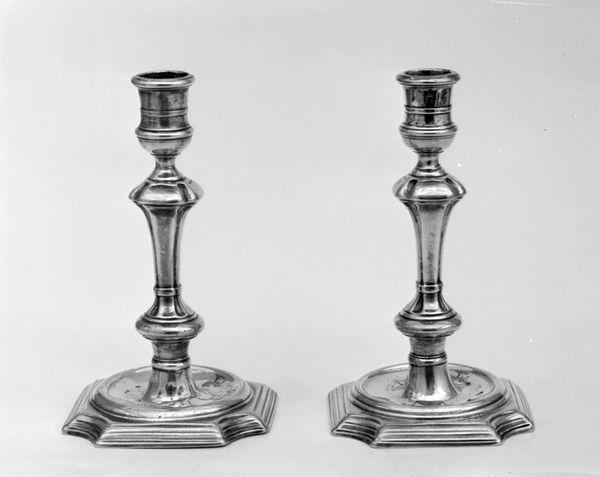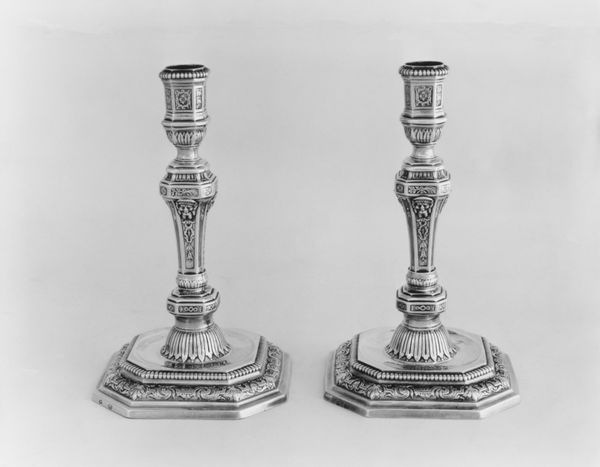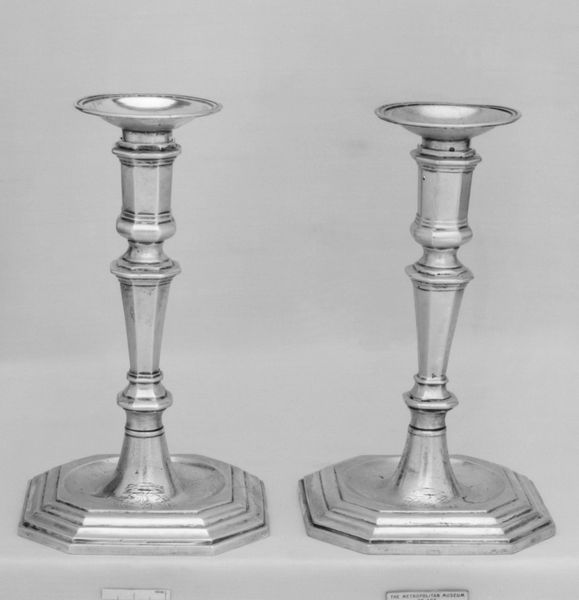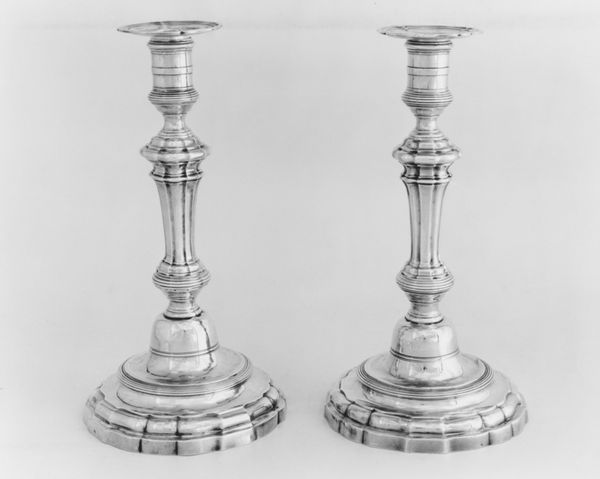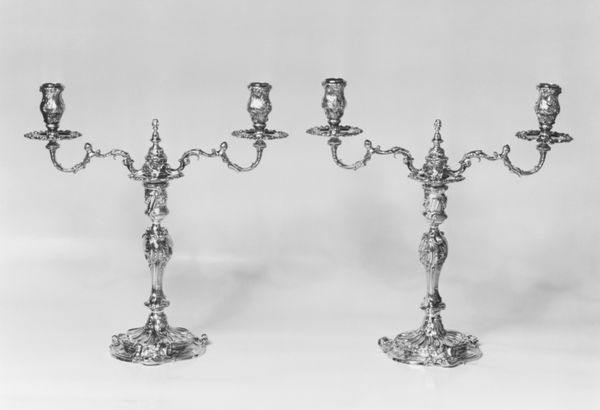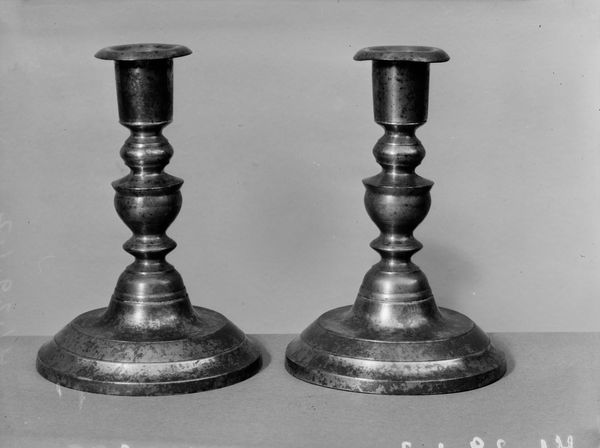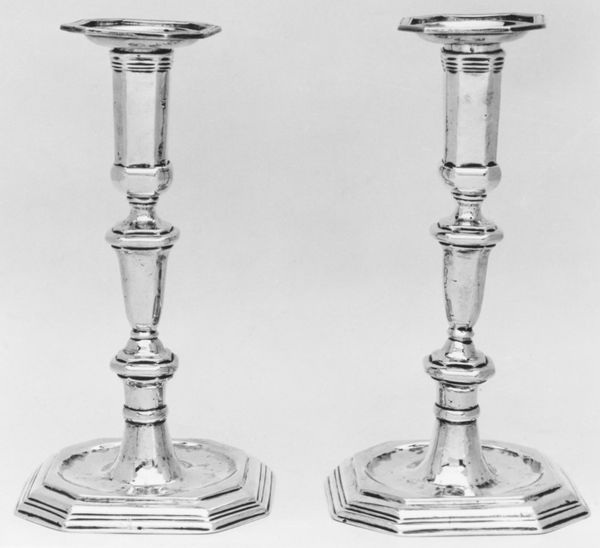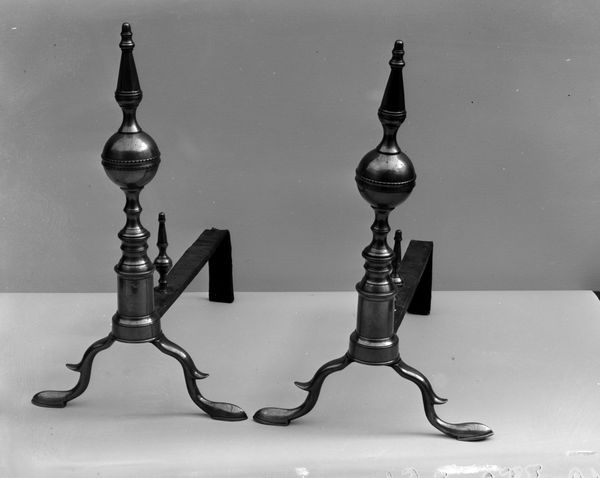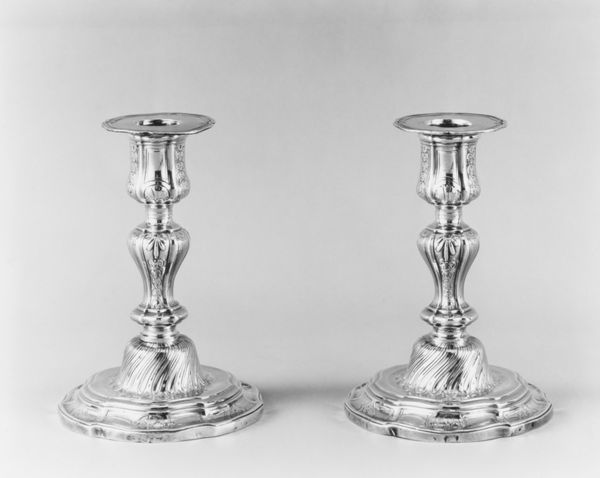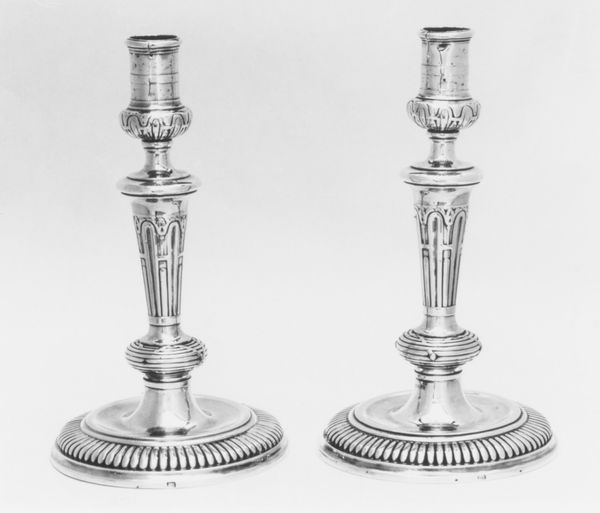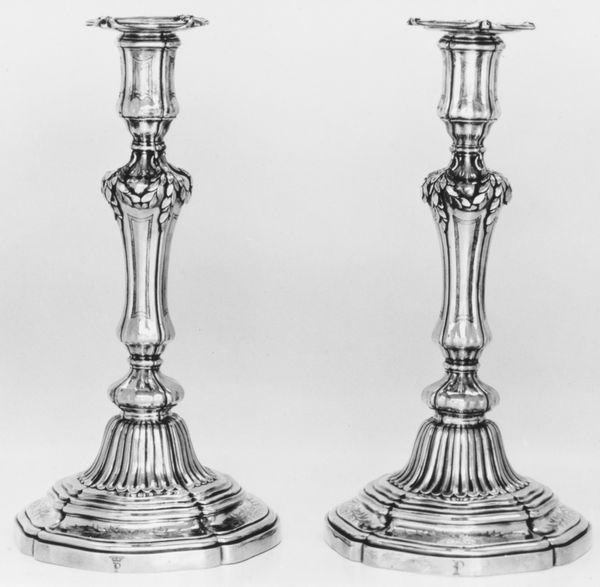
metal, bronze, sculpture
#
neoclassicism
#
metal
#
sculpture
#
bronze
#
sculpture
#
decorative-art
#
statue
Dimensions: 24 1/2 in. × 13 in. × 20 3/8 in. (62.2 × 33 × 51.8 cm)
Copyright: Public Domain
Curator: These andirons, crafted by Revere and Son between 1787 and 1810, are a striking example of Neoclassical design. They currently reside at the Metropolitan Museum of Art. Editor: They feel almost severe, yet there's a certain lightness. The spiral fluting on the posts and those claw feet, though traditional, offer a visual rhythm that's quite captivating. Curator: Rhythm is a good word. The Neoclassical style, popular during this period, was a reaction against the ornate Rococo, valuing symmetry and order, drawing heavily on classical Greek and Roman forms. Consider how this aesthetic intersected with the political ideologies of the era. Editor: Yes, those clean lines and restrained embellishments certainly echo the Enlightenment ideals of reason and clarity. But those claw feet disrupt that rigid framework somewhat, don’t you think? There's an almost bestial touch there, grounding the soaring Neoclassical aspirations in something more…earthy. Curator: Interesting point. The claw-and-ball foot motif, while popular, can also be read as a subtle assertion of power and dominion. What about the finial at the top, which resembles an urn, commonly used as a burial symbol and for containing cremated ashes. Do you have any insight into that? Editor: Precisely! And isn't it fascinating how this seemingly innocuous detail could hint at mortality and memory within the domestic sphere? The hearth, after all, was central to home life. Fire meant both comfort and sustenance, and to mark that significance with constant visual reminders of passing. It subtly embeds an understanding of life's brevity into the every day. Curator: Well said. It makes you think about the relationship between power, design, and death and the different lived realities surrounding it. Considering they were made by Revere and Son, imagine the sociopolitical weight carried in the use of these particular images. The American struggle for liberation, democracy... These objects silently carry meaning, culture, and, indeed, even a loaded history. Editor: Absolutely. They become more than mere functional objects; they're vessels of cultural memory and quiet commentary. Curator: Reflecting on it, these andirons encapsulate so much about the period, from its aesthetic ideals to its underlying social and political tensions. Editor: They remind us that even the most seemingly simple objects can hold profound symbolic depth and invite complex dialogues about the past.
Comments
No comments
Be the first to comment and join the conversation on the ultimate creative platform.
